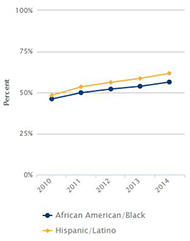|
|
|||||||||||||||||
|
|||||||||||||||||
|
|||||||||||||||||
|
|||||||||||||||||
|
Helpful Links American Academy of Pediatrics: Breastfeeding Initiatives California Breastfeeding Coalition Breastfeeding Among Minority Women: Moving from Risk Factors to Interventions, Advances in Nutrition Public Policies to Support Breastfeeding: Paid Family Leave and Workplace Lactation Accommodations, CLASP & Breastfeed LA Racial and Ethnic Disparities in Breastfeeding, Breastfeeding Medicine Racial Disparities in Access to Maternity Care Practices That Support Breastfeeding—United States, 2011, Morbidity and Mortality Weekly Report
|
|||||||||||||||||
|
|
|||||||||||||||||
|
Kidsdata.org is a program of the Lucile Packard Foundation of Children's Health, which uses data to promote the health and well being of children This email was sent by: %%Member_Busname%% To view this email as a web page, click here. |




